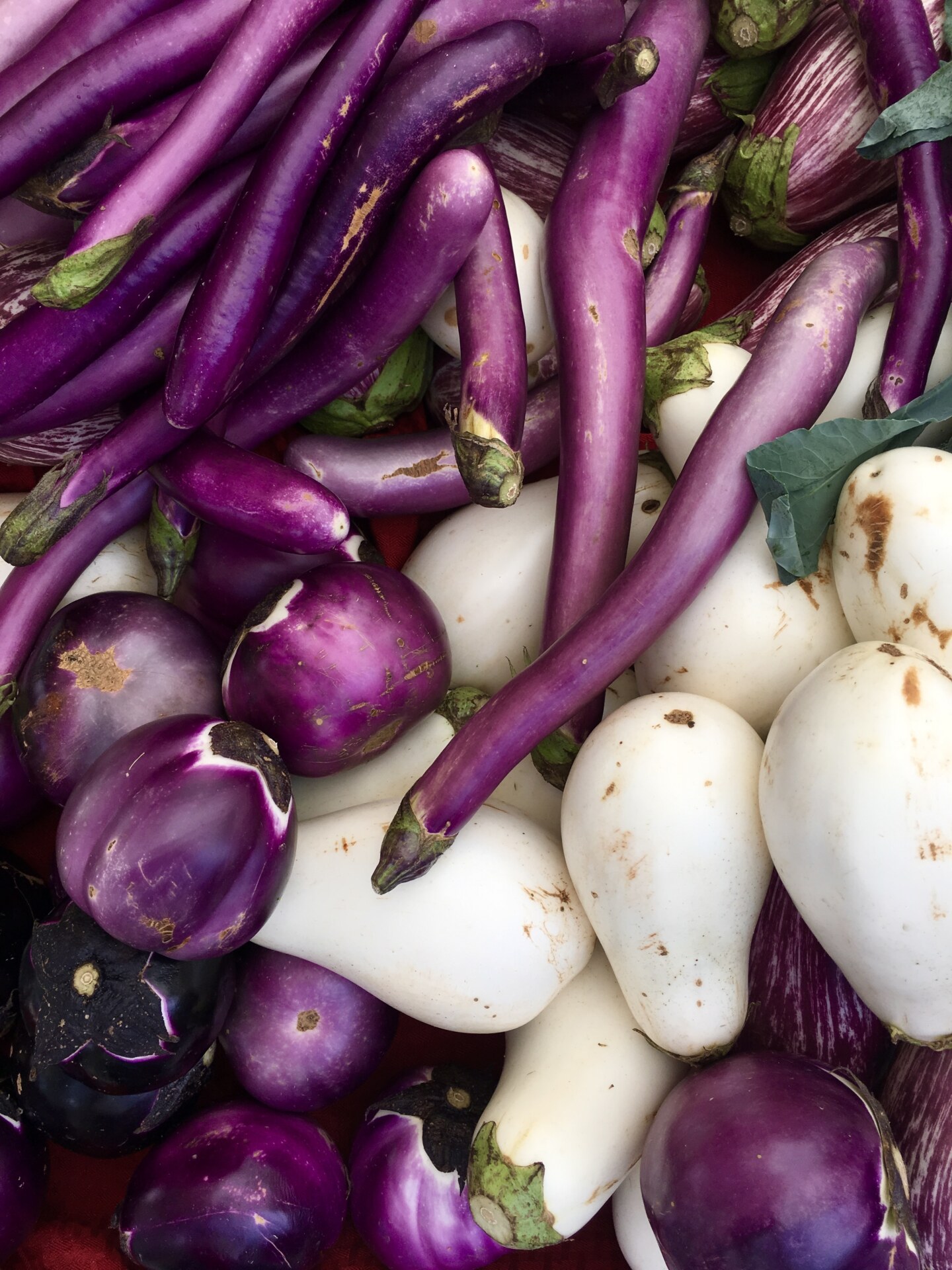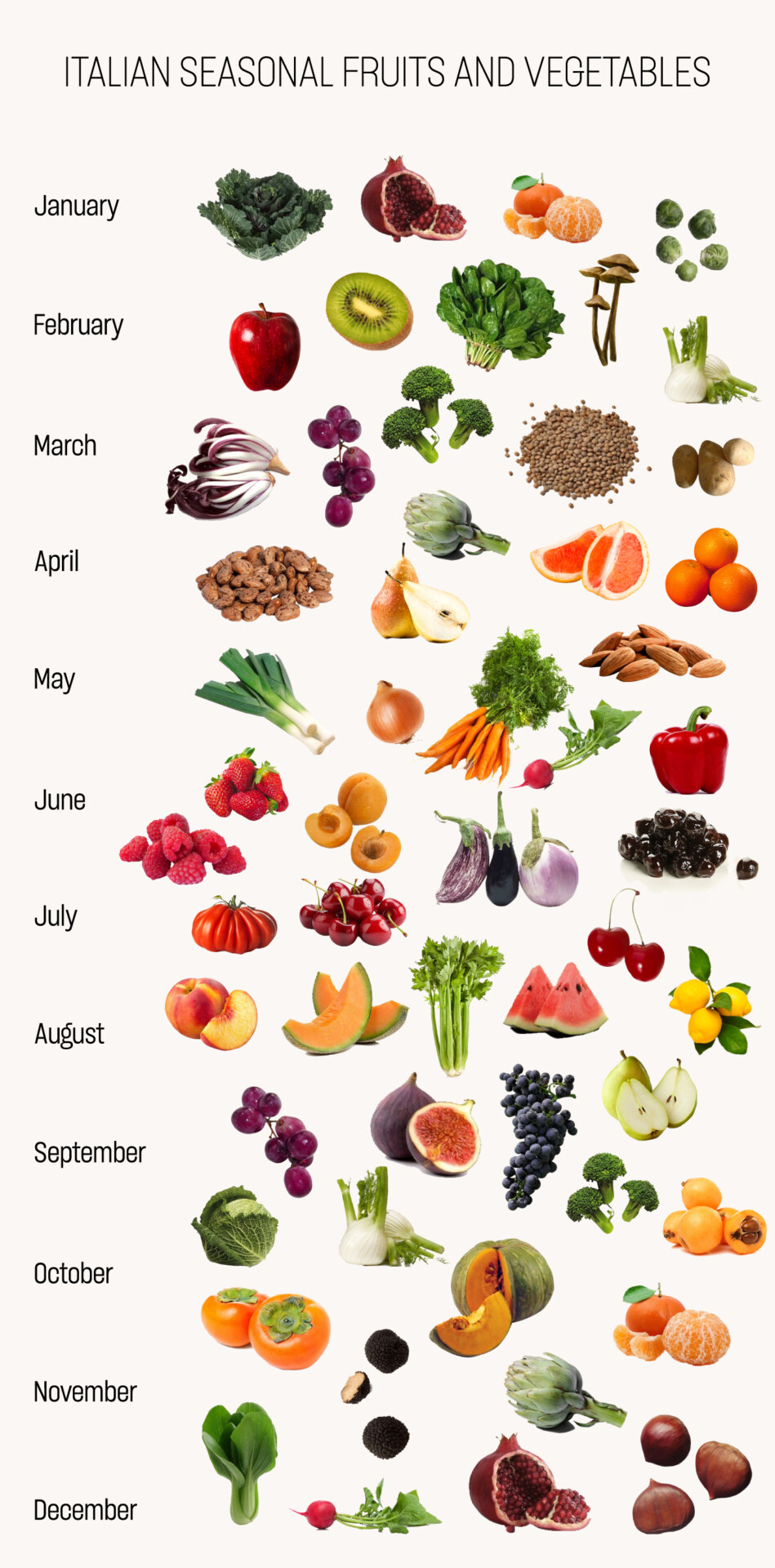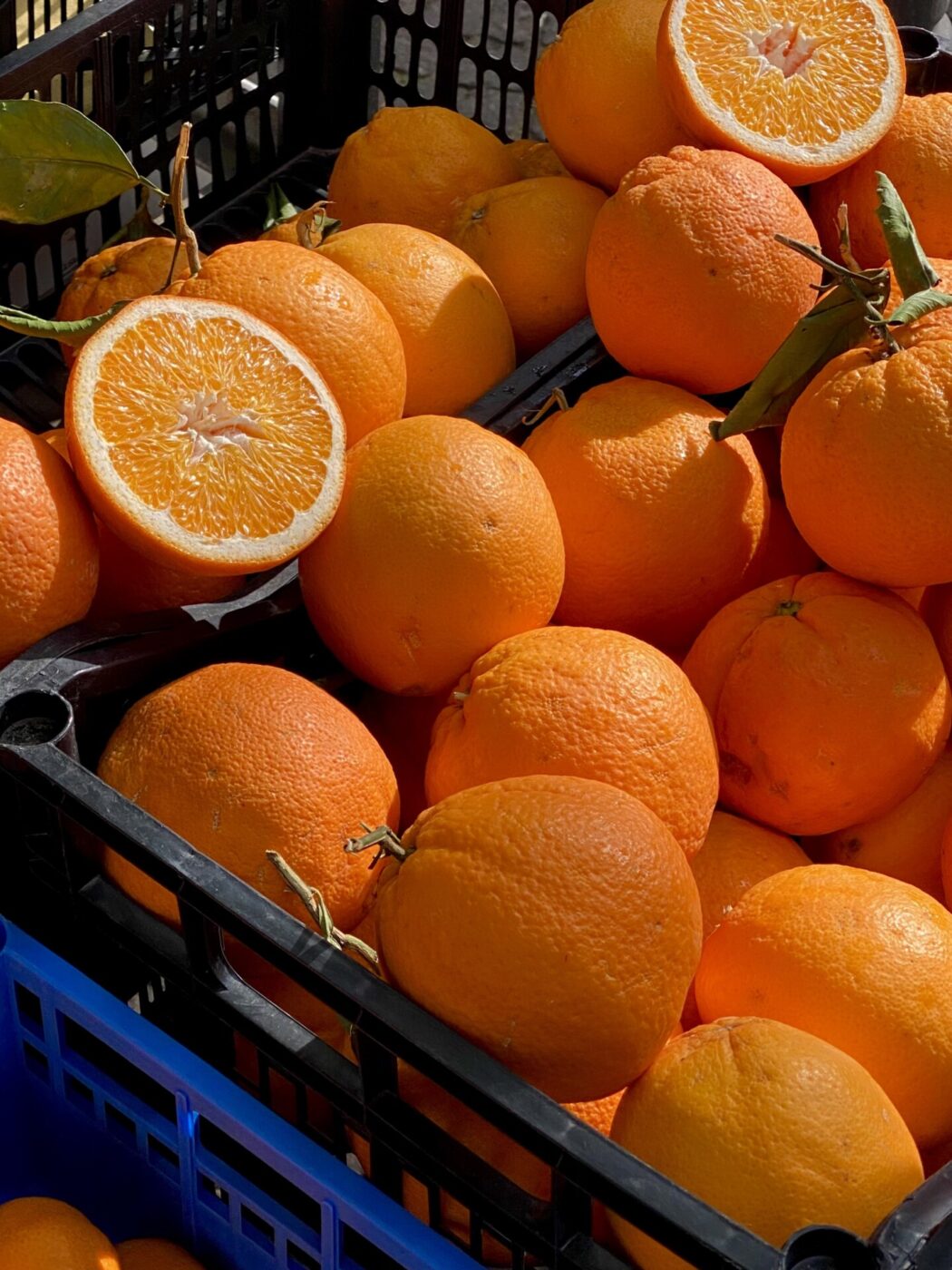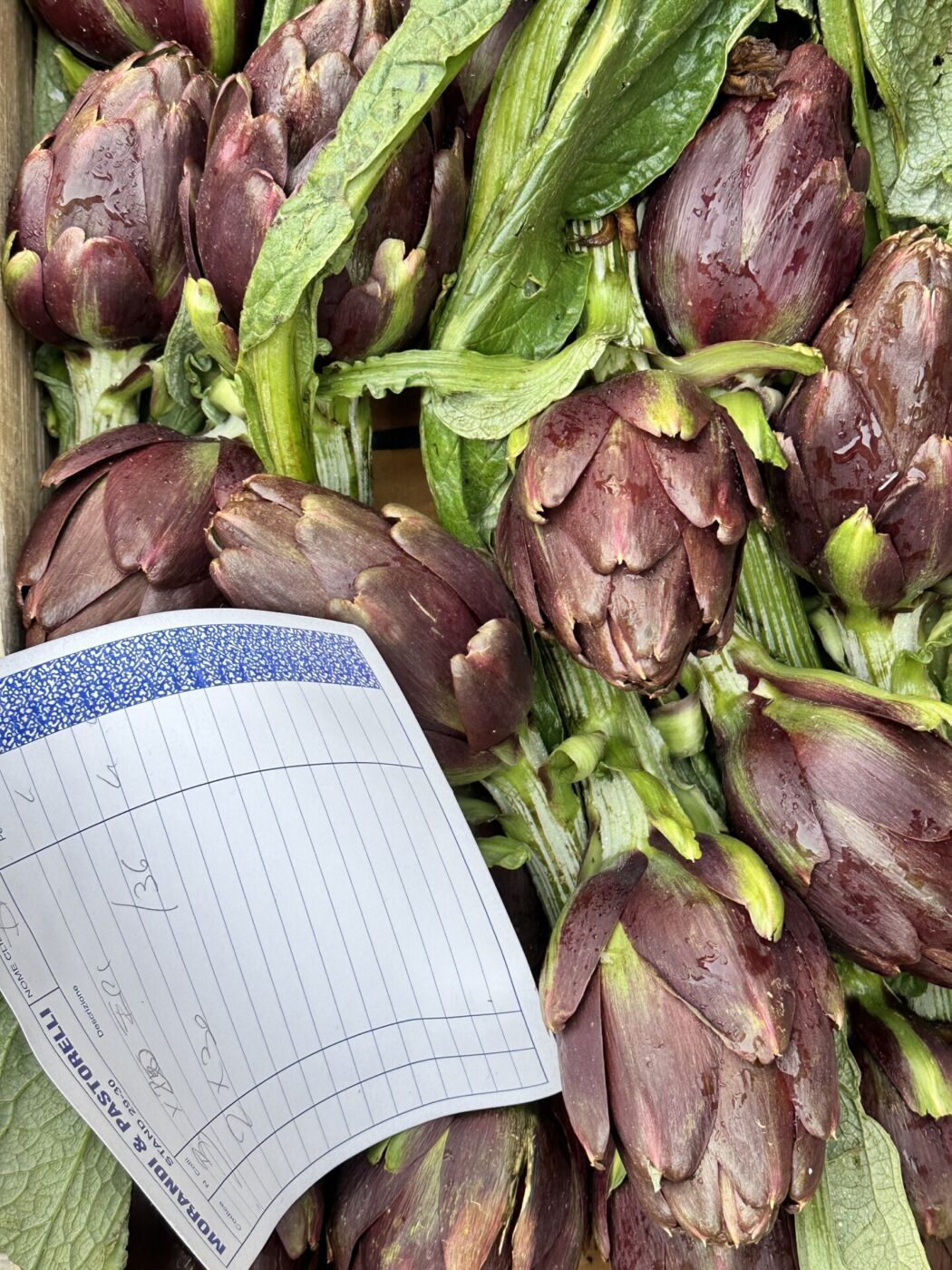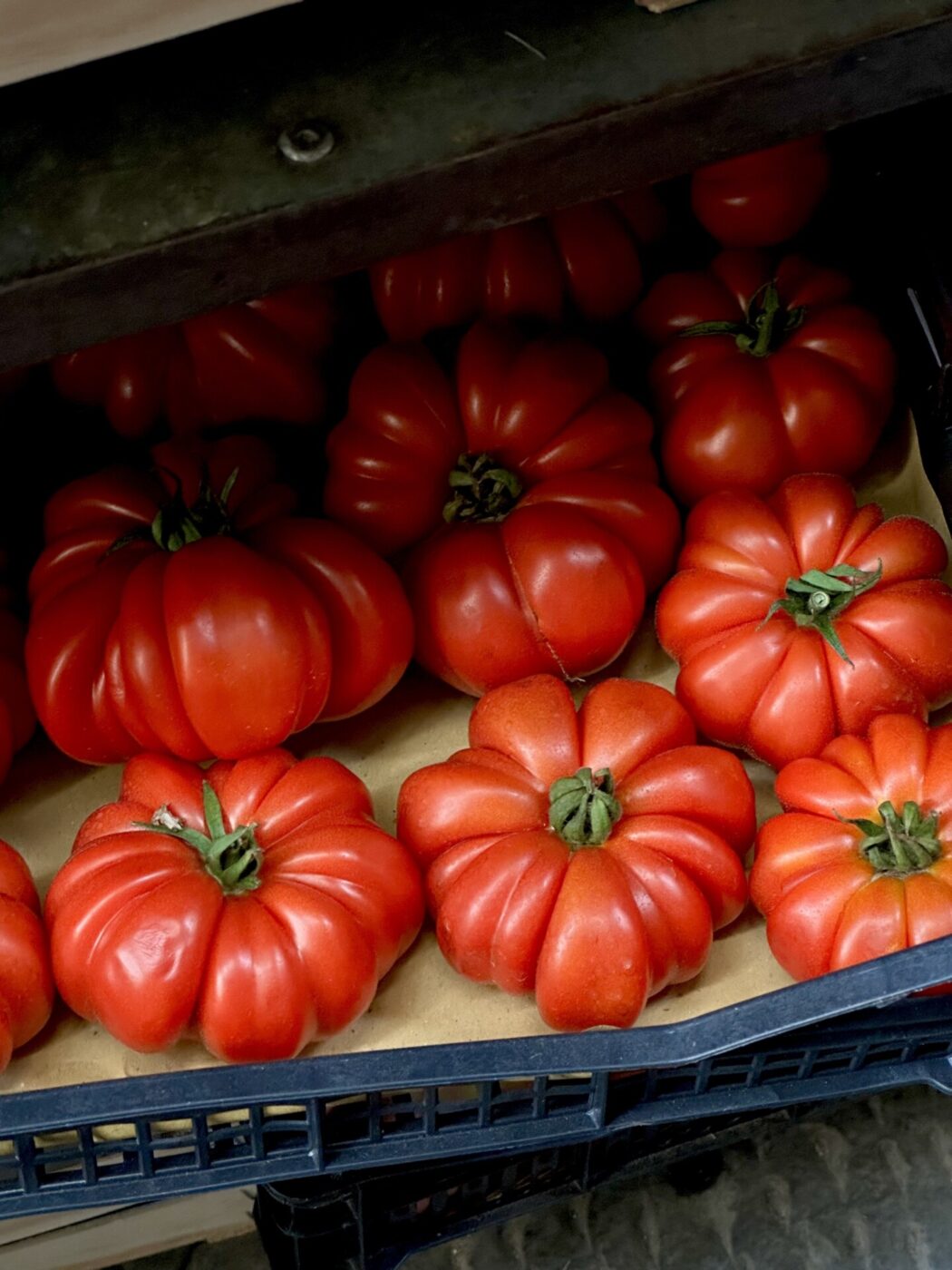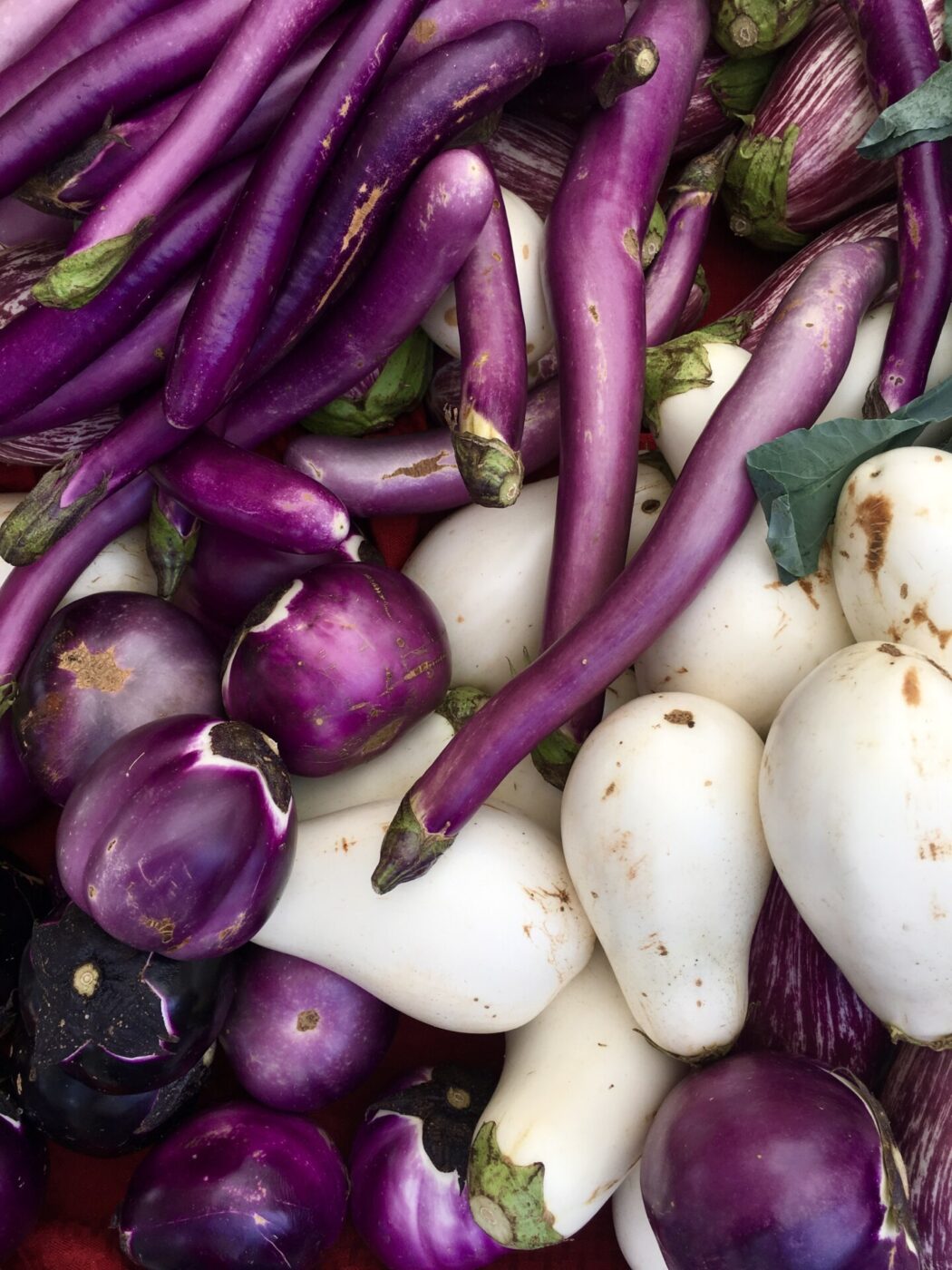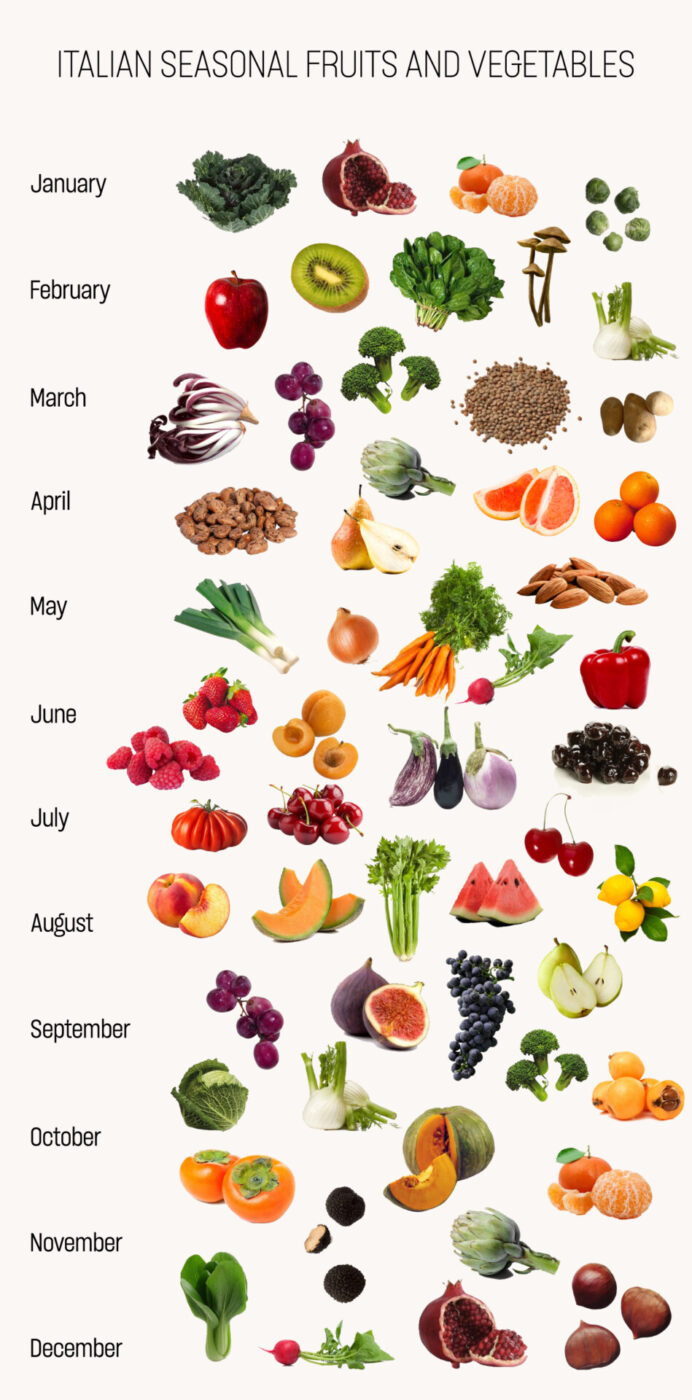“Food always tastes better in Italy.” I’m sure you’ve heard—or even uttered—this phrase at least a dozen times. I know I have, both when slurping a mouthful of tajarin con funghi porcini in Piedmont and while hopelessly forking an insalata caprese back in the United States. Although it’s true that there’s no comparison between an American grocery store’s shelf-stable parmesan cheese with Emilia Romagna’s Parmigiano Reggiano, or a guanciale-loaded carbonara from Rome with whatever cream-filled variations exist abroad, the one secret that really makes this sentence true is seasonality. I’ve learned that Italians live seasonally in many ways—like how they dress for the season, not the weather, which is why you’ll see wool coats even on a 20°C day—but above all, this manifests in culinary habits.
It’s not necessarily a conscious choice. Most Italians shop at markets or fruttivendoli, where you’ll often only see in-season produce (with the occasional bananas and ever-present greenhouse tomatoes). This certainly brings a bit of frustration, when I’m stuck with just broccoli and his cousins for weeks in the winter. Even large supermarkets like Esselunga and COOP follow along with the seasons for the most part, which stems from the fact that Italy imports significantly less than it exports—in 2022, in regards to the U.S. alone, Italy’s agricultural imports totaled $1.13 billion, while exports clocked in at $7.4 billion.
With a span of 12 latitudes and 12 longitudes, a temperate climate, and a combination of many different terrains, we can grow a huge swath of fruits, vegetables, and grains here. Apples thrive in the cold mountains of Alto Adige and rice in the watery Po Valley, while olives love the dry flatlands of Puglia and citrus the warm salty Sicilian soil. There’s a reason that 89 of Italy’s 222 DOP and IGP products are fruit, vegetables, and cereals—from potatoes in Calabria to basil in Liguria; a fact I’m reminded of when those first warm days of spring bring green jewels in the form of peas, asparagus, and artichokes. I gobble them up until I’m inevitably bored again—just in time for summer’s lush bounty.
The fact of the matter is that in-season produce just tastes better—ever had a tomato in July versus January?—especially if it’s grown locally, and, when you have better produce, you have better food; it goes without saying that there’s a difference in bruschetta or panzanella with the aforementioned July versus January tomato. Here, a guide to what’s in-season when in Italy, and, with that, what to eat, cook, and order accordingly.
*Depending on which region you’re in, what’s in-season can blur across calendar lines.
WINTER
Condemned to the fate as the worst growing season, winter, from the 21st or 22nd of December to the 20th of March, actually boasts loads of cruciferous veggies like kale, cabbage, and broccoli and bright colors from the likes of radicchio, purple cauliflower, and oranges—you haven’t truly tasted the latter until you’ve tried blood oranges from Sicily and clementines from Calabria. It’s the time of year for hearty soups chocked full of these contestants, heaping plates of sautèed chicory of any kind, desserts like tiramisu with persimmon or a torta with pear and chocolate, and tall glasses of the best spremuta you’ll ever have.
Fruits: oranges (arancie), clementines (clementine), mandarins and tangerines (mandarini), persimmons (cachi), pomegranates (melagrane), pears (pere), kiwis (kiwi), almonds (mandorle), apples (mele), grapefruits (pompelmi)
Vegetables: radicchio, kale (cavolo riccio), chicory (cicoria), leeks (porri), broccoli (broccoli), artichokes (carciofi), cauliflower (cavolfiore), romanesco broccoli (broccolo romanesco), cabbage (cavolo), fennel (finocchio), Brussels sprouts (cavolini di Bruxelles), onions (cipolle), spinach (spinaci), thistle (cardo), broccoli rabe (cimi di rapa), carrots (carote), radish (ravanello), potatoes (patate), beans (fagioli), lentils (lenticchie), beets (barbabietole)
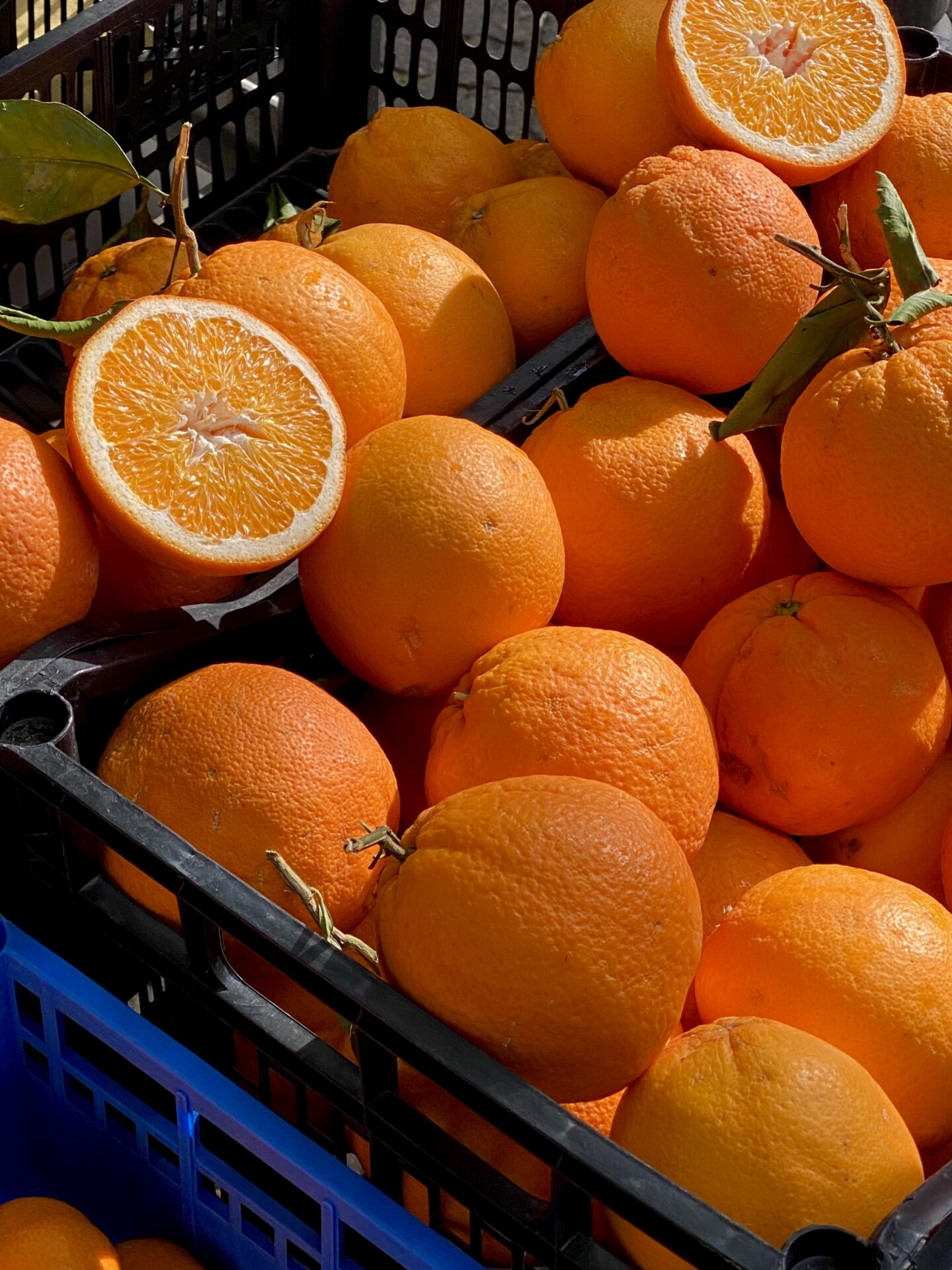
SPRING
Italy’s gardens burst to life with the return of spring from the 20th of March to the 20th or 21st of June. The green leaves and flowers bring with them an abundance of delicate fruits and vegetables, perfect for lighter recipes as you shed those heavy layers. Make sure to try medlars, agretti, and puntarelle, all produce you won’t see outside of Italy, or even outside of their respective regions. Alongside spring cleaning, this is the season for picking wild cherries, shelling spring peas, fave e cicoria in Puglia, carciofi alla giudia in Rome, risotto with fiori di zucca, and creamy desserts flavored with strawberries.
Fruits: lemons (limoni), oranges (arancie), clementines (clementine), mandarins and tangerines (mandarini), grapefruits (pompelmi), medlars (nespole), kiwi (kiwi), strawberries (fragole), cherries (ciliegie), sour cherries (amarene), apples (mele), raspberries (lamponi), cantaloupe/melons (meloni), pears (pere), persimmons (cachi)
Vegetables: fava beans (fave), asparagus (asparagi), agretti, puntarelle, artichokes (carciofi), zucchini flowers (fiori di zucca), spring peas (piselli), leeks (porri), beets (barbabietole), beans (fagioli), garlic (aglio), spring onions (cipollotti), broccoli rabe (cimi di rapa), green beans (fagiolini), brussels sprouts (cavolini di Bruxelles)
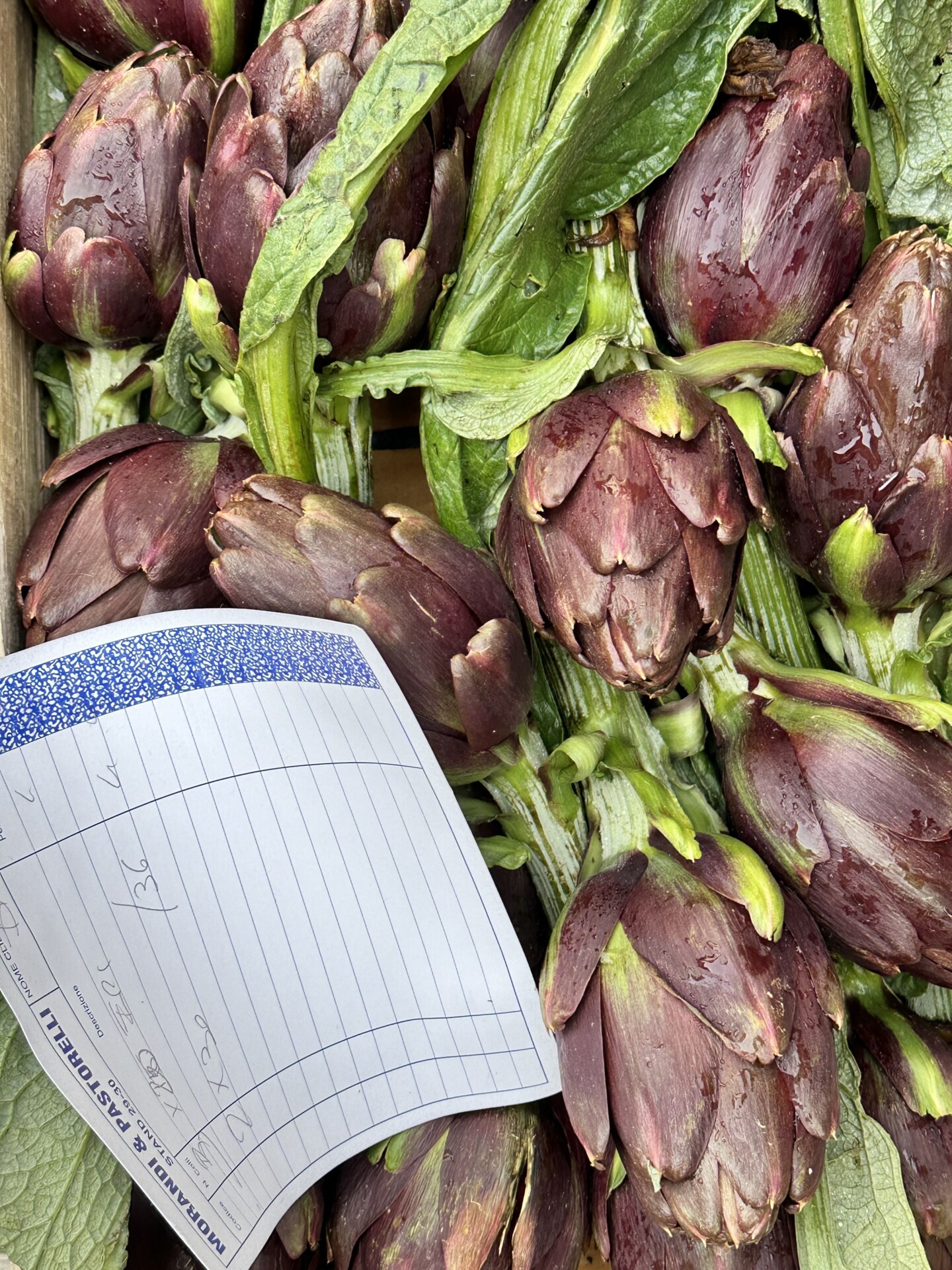
SUMMER
An estate Italiana—which technically runs from the 20th or 21st of June to the 22nd or 23rd of September, although the tourists continue to arrive earlier and earlier—bring with it long days, scorching sunlight, Ferragosto, and, more importantly, tomatoes. Along with these red rubies, zucchini, melons, lemons, and berries all find their way into the spotlight, and into most of our favorite dishes. Slurp up spaghetti alla nerano in Amalfi and lemon granita in Sicily, bring an insalata caprese to every party you attend, wrap thin pieces of prosciutto around a slice of melon for the perfect merenda, and make your passata or sun-dried tomato paste for the coming months. This is Italy’s juiciest season.
Fruits: tomatoes (pomodori), lemons (limoni), strawberries (fragole), figs (fichi), watermelon (cocomero/anguria), cantaloupe/melons (meloni), apricots (albicocche), peaches (pesche), plums (susine), cherries (ciliegie), currants (ribes), blueberries (mirtilli), blackberries (more), prickly pears (fichi d’India), grapes (uva)
Vegetables: zucchini (zucchine), cucumbers (cetrioli), eggplant (melanzane), peppers (peperoni), zucchini flowers (fiori di zucca), basil (basilico), parsley (prezzemolo), peas (piselli), arugula (rucola), celery (sedano), green beans (fagiolini), carrots (carote), onions (cipolle), lettuce (lattuga), rhubarb (rabarbaro), new potatoes (patate novelle)
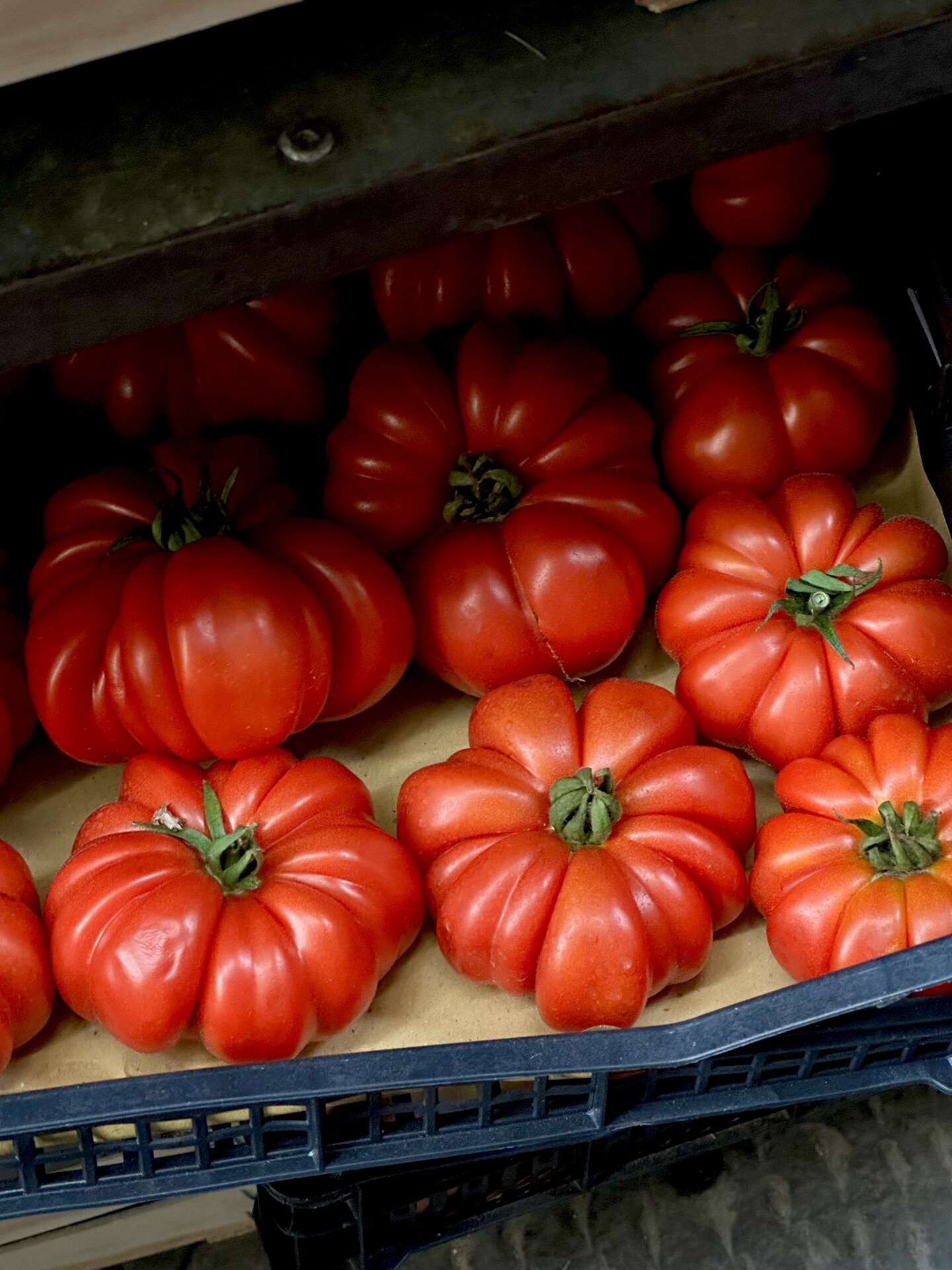
AUTUMN
Known as the harvest season, autumn—from the 22nd or 23rd of September to the 20th or 21st of December—certainly lives up to its moniker. Not only is it the time of the grape and olive harvests—which promises wine and olive oil—but it’s a real cornucopia of gems: porcini mushrooms, chestnuts, pumpkins, figs (especially the settembrini), and truffles. As you break out that wool coat again, you’ll eat the last of the summer’s figs, smell roasting chestnuts on every street corner, dip your bread into bright green olio nuovo, twirl forkfuls of tagliolini con porcini, and splurge for shaved white truffle on top of, well, anything.
Fruits: figs (fichi), prunes (prugne), grapes (uva), apples (mele), apricots (albicocche), peaches (pesche), plums (susini), pomegranates (melograni), pears (pere), olives (olive), chestnuts (castagne), walnuts (noci), persimmons (cachi), oranges (arancie), clementines (clementine), tangerines (mandarini), lemons (limoni), kiwi (kiwi), medlars (nespole)
Vegetables: eggplant (melanzane), fennel (finocchio), spinach (spinaci), porcini, mushrooms (funghi), truffles (tartufi), broccoli rabe (cima di rapa), broccoli (broccoli), pumpkin (zucca), prickly artichokes (carciofi spinosi), chicory (cicoria), cauliflower (cavolfiori), cabbage (cavolo), black cabbage (cavolo nero), Romanesco broccoli (broccoli romanesco), potatoes (patate), radish (ravanello)
